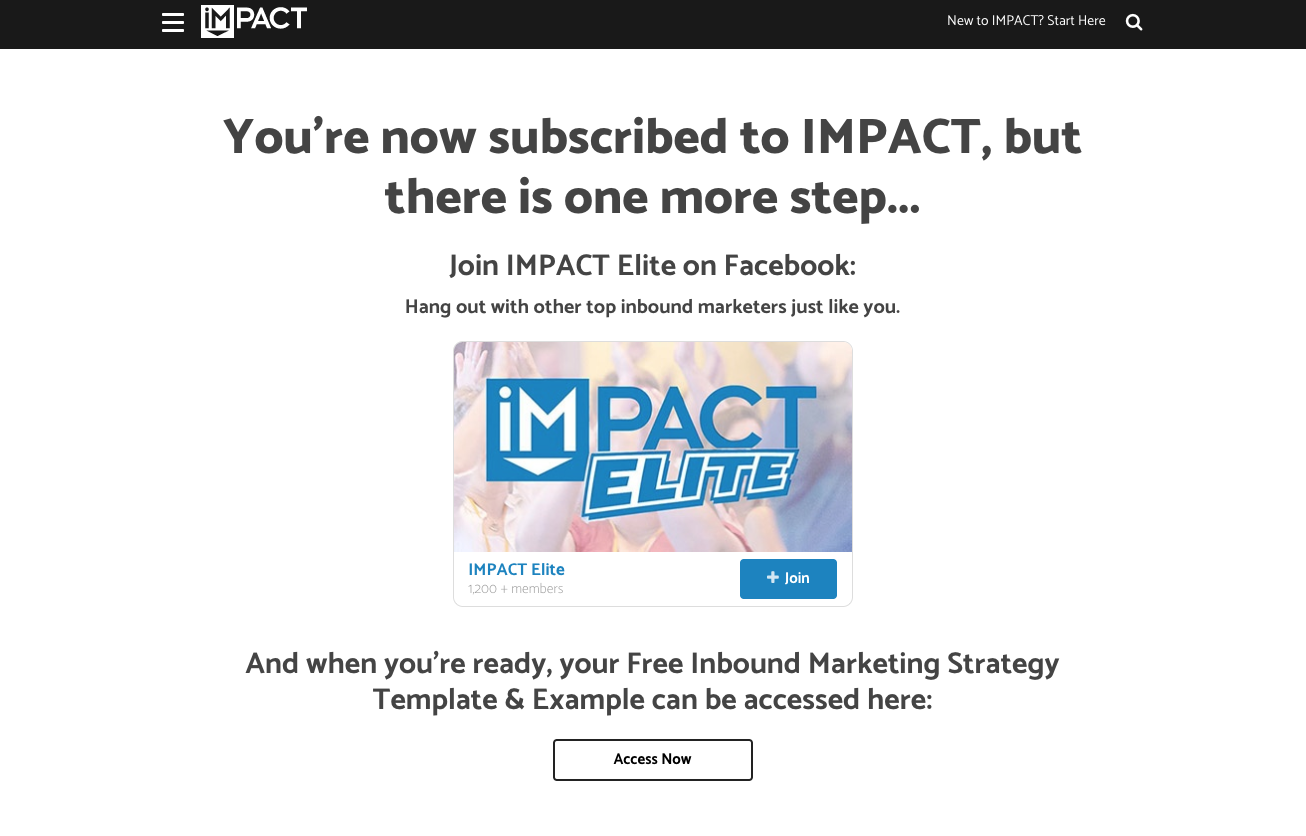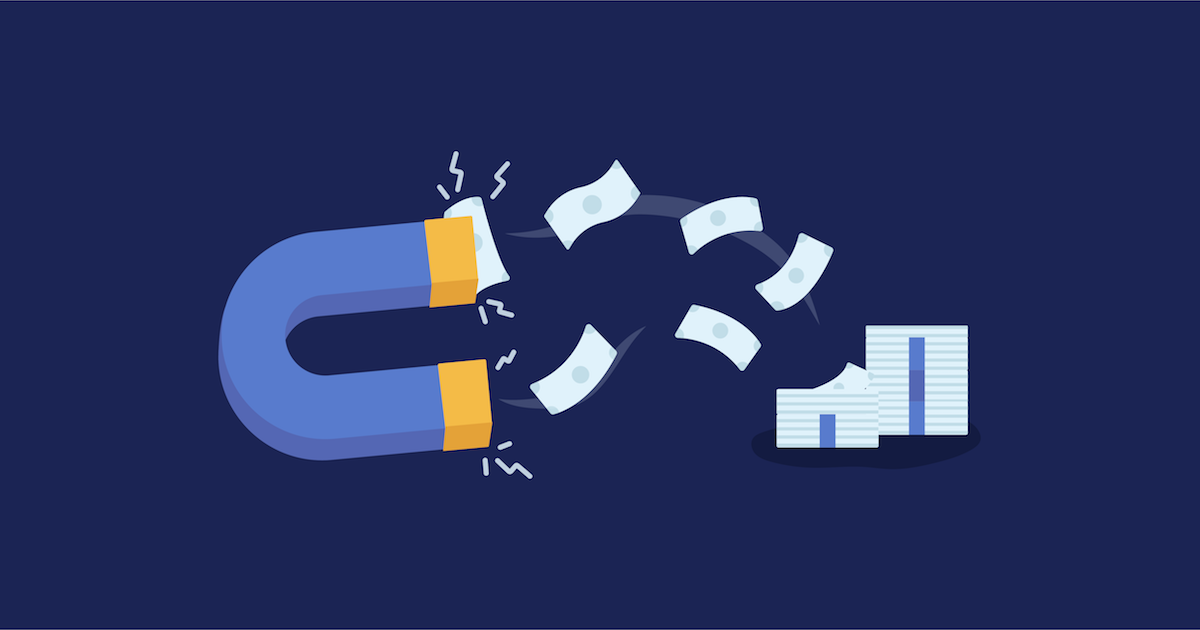“We don’t sell saddles here” wrote Slack Co-Founder Stewart Butterfield in a company-wide memo before launch. Those words formed the foundation of a strategy that would make Slack one of the fastest-growing B2B startups of all-time:
Don’t sell the product, sell what it enables customers to do.
At its core is an engine that drives all B2B businesses. Behind the saddles and memos, the real reason for Slack’s astronomical growth: great B2B demand generation.
What is B2B demand generation?
B2B demand generation involves driving interest in a product or service that promises to solve a business problem. In other words, it’s the process of generating demand for an offer that’s specifically B2B. It’s the answer to “how do we get businesses to want this?”
Though, it’s not always that simple.
Before we go on, let’s clear up a few common misconceptions surrounding B2B demand generation by defining what it isn’t.
What isn’t B2B demand generation?
The term “demand generation” is often used interchangeably with “lead generation.” While the two are closely related, they’re not the same. Here’s the difference:
To generate a lead you have to generate demand. You need to convince people to trade their personal information for an asset, like an ebook, a tip sheet, or a consultation. So, all lead generation campaigns are a type of demand generation.
On the other hand, not all demand generation campaigns are a type of lead generation—as in, the goal of a demand generation campaign doesn’t always have to be to generate a lead. A demand generation campaign can generate awareness, free trial signups, sales, and much more.
The difference between B2B demand generation and B2C demand generation
Another key differentiator is audience. A B2B demand generation strategy is going to look slightly different than a B2C demand generation strategy because, traditionally, businesses take longer to sell to.
A B2C company usually has to get buy-in from one, maybe two people maximum. A B2B company, though, has to earn the approval of entire teams, departments, sometimes whole businesses. Generally B2B purchases are also more costly.
Together that adds up to a longer buying cycle, which is why B2B demand generation strategies usually focus on guiding the prospect to a sales representative instead of going for the sale straight away. Here’s a useful infographic to keep in mind when you’re determining your B2B demand generation strategy:
4 powerful B2B demand generation strategies for your next campaign
Looking to build a B2B demand generation campaign from scratch? Keep these four powerful strategies in mind:
Build a foundation with conventional methods you can track
It’s a universal truth: People like secret knowledge that gives them an edge over everybody else—little-known “tricks” and “hacks” to get ahead.
That’s why marketers scour blogs and case studies for unconventional tactics hoping to find their secret sauce...
But secret sauce doesn’t exist.
Most times the answer to “how do we get people to want our product?” is hiding in traditional marketing methods like:
- Search advertising: Bidding for clicks based on keyword searches related to your business.
- Display advertising: Real-time bidding for impressions based on key targeting capabilities like demographics, behavior, browsing history.
- Email marketing: Sending out emails to well-defined lead segments. Email has long been the unwavering king of nurture. Once you have a prospect’s information, this is a great way to drive demand generation.
- Organic marketing: Updating organic channels like your blog and social media accounts to boost awareness of your product or service. This also includes the creation of lead magnets like ebooks or tip sheets you can offer in exchange for prospect information.
Tried and true marketing methods should be at the core of your B2B demand generation strategy. They may not be sleek or secretive, but there’s a reason so many businesses use them: they work. Use them, track them closely, and determine which delivers the highest ROI for your business.
Be less intrusive
Advertiser Howard Gossage famously said “People don’t read ads. They read what interests them, and sometimes that’s an ad.”
Today advertisers and publishers are finally catching on. The New York Times, for instance, announced last year that it would no longer count on display advertising to reach its readers, and instead rely more on native advertising.
While the method is rooted in Gossage’s days, it’s still widely misunderstood by many. Our founder Todd Garland explains it simply, and why it’s an alluring option for advertisers and publishers alike:
"At its core, Native can be described as a user experience (UX) optimized ad unit that fits into a publisher’s design style guide. The New York Times is creating advertisements that meet their internal, advertiser, and reader needs."
Think product placement over pesky TV commercials here. You’re probably more receptive to a product or service if it’s naturally worked into your show than if it interrupts your viewing experience.
Unlike product placement, though, native advertising isn’t about disguising products or services as organic content. It’s about writing an ad that people want to read or filming one they want to watch.
Explain your product or service simply
Sometimes getting people to claim your product is as simple as, well, making it simple. Too many businesses still focus on touting their product’s features: a second-gen processor, a CSS editor. But the more effective way of creating demand for a product or service is to tease out its benefits and explain them simply.
Dropbox found that out after publishing their famous explainer video to the homepage of their website. Instead of getting into the nuts and bolts -- the code their new multi-device storage solution was built on -- they used a two-minute hypothetical scenario to demonstrate its capabilities, describing the tool as a “magic pocket: a single secure place for all your stuff.”
The result?
The two-minute explainer video generated demand in the form of over 10,000,000 customers and $48,000,000 in revenue. Here’s a look at the original:
Think beyond the conversion
Marketers trying to run a B2B demand generation campaign often get tunnel vision. They’re so focused on one product, one promotion, one landing page, that they forget there’s always opportunity to intertwine demand generation campaigns -- to generate demand for one product with another. One of the best ways to do it is with an optimized “thank you” page.
An optimized “thank you” page has three components:
- It shows sincere gratitude and appreciation for a new lead once they convert. None of this ‘thank you’ stuff. These pages are one of the few places where exclamation points come in handy. Remember: Without these people, your company’s not much of a company at all. You owe all you have to your customers. Make sure your gratitude shows through.
- It lets new leads know what they need to do next to get what they came for (will you send an email with the ebook? Will it start downloading immediately?) and what to do if your instructions don’t work (if they don’t get an email, what should they do?).
- It directs visitors to another related resource of yours that could supplement what they’ve just converted for. If your ebook is on the importance of buyer personas, do you have buyer persona templates you could direct them to?
Here’s a great example from IMPACT Branding & Design of what an optimized “thank you” page looks like:

You’ll be surprised at what else people will read, download, or sign up for if you just ask them to.
Push pain points
Let’s quickly refer back to that company-wide memo from Slack’s Stewart Butterfield:
“We are unlikely to be able to sell ‘a group chat system’ very well: there are just not enough people shopping for group chat system (and, as pointed out elsewhere, our current fax machine works fine). … That’s why what we’re selling is organizational transformation.”
Aside from doing a great job of teasing out the benefits of the communication tool, these words highlight a major problem that many businesses overlook:
People may not understand why they need your product. Sometimes you have to remind them.
At first glance this may seem similar to “describe your product simply,” but it’s more than that. It’s about really emphasizing the problem your potential customers face.
For Slack’s audience, it was disorganization—long email chains, poor file-sharing capabilities, and altogether cluttered communication. So they emphasized those problems in their marketing by painting the picture of a company held back by communication woes. As the team at Growth Hackers writes, they focused on “selling a solution to a problem that people didn’t know they had.”
A great way to do this is by following the PAS formula:
- Problem: Spell out the problem your prospect has without your product or service. Why would they be looking for it?
- Agitation: Push their pain points. Remind them of the symptoms of their problem and the overall effect it has on their life.
- Solution: Detail the solution that your product or service has by alleviating each one of the aforementioned symptoms and describe the overall effect on quality of life.
Here’s a simple breakdown of how to do it from the team at Instapage:
Don’t hesitate to adapt these B2B demand generation strategies
Remember: These strategies are just a baseline. Your own B2B demand generation efforts depend on things like your audience, your campaign goal, traditionally successful channels, and much more.
Use these techniques as a starting point and test, test, test to determine their effectiveness. Then, tweak them to your business’s needs.



